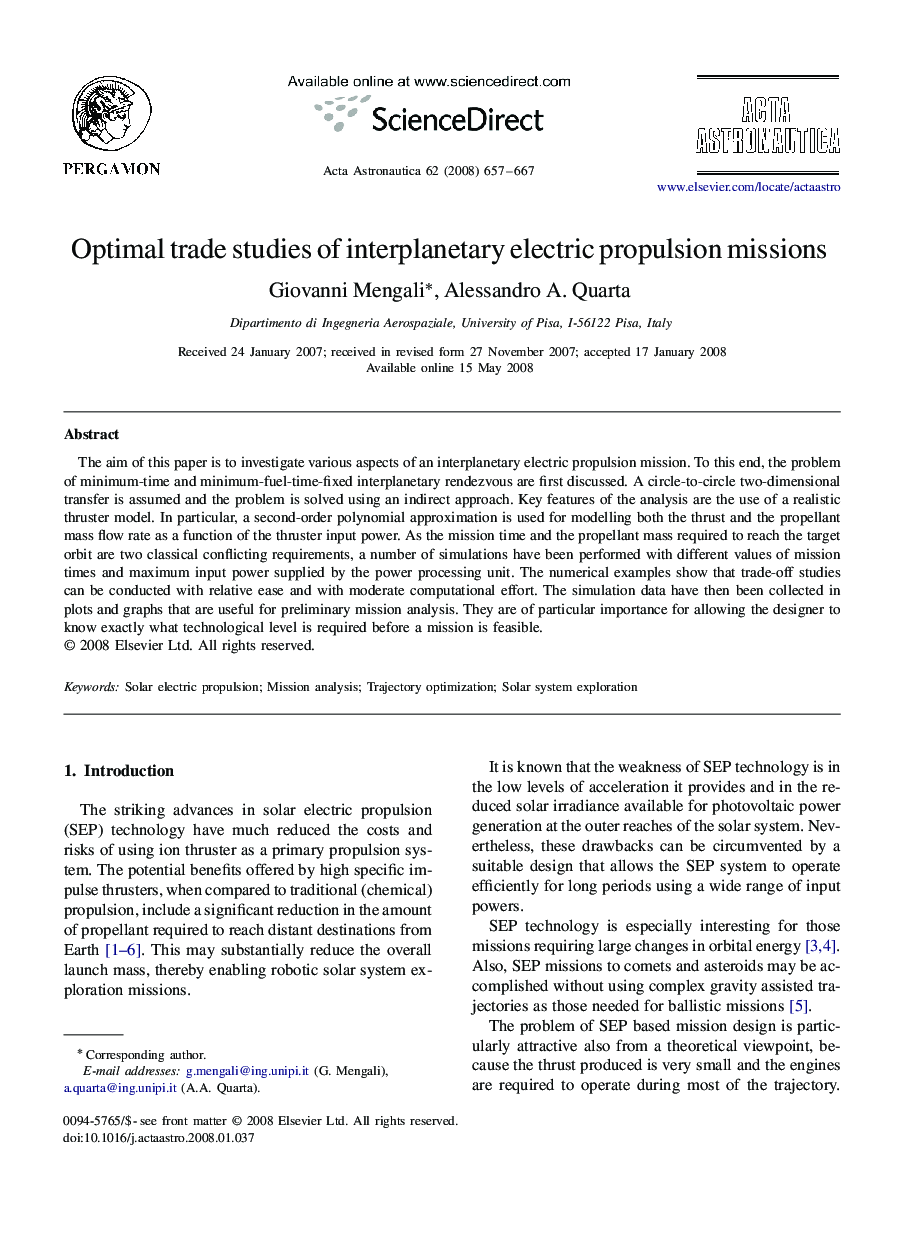| Article ID | Journal | Published Year | Pages | File Type |
|---|---|---|---|---|
| 1716800 | Acta Astronautica | 2008 | 11 Pages |
Abstract
The aim of this paper is to investigate various aspects of an interplanetary electric propulsion mission. To this end, the problem of minimum-time and minimum-fuel-time-fixed interplanetary rendezvous are first discussed. A circle-to-circle two-dimensional transfer is assumed and the problem is solved using an indirect approach. Key features of the analysis are the use of a realistic thruster model. In particular, a second-order polynomial approximation is used for modelling both the thrust and the propellant mass flow rate as a function of the thruster input power. As the mission time and the propellant mass required to reach the target orbit are two classical conflicting requirements, a number of simulations have been performed with different values of mission times and maximum input power supplied by the power processing unit. The numerical examples show that trade-off studies can be conducted with relative ease and with moderate computational effort. The simulation data have then been collected in plots and graphs that are useful for preliminary mission analysis. They are of particular importance for allowing the designer to know exactly what technological level is required before a mission is feasible.
Related Topics
Physical Sciences and Engineering
Engineering
Aerospace Engineering
Authors
Giovanni Mengali, Alessandro A. Quarta,
